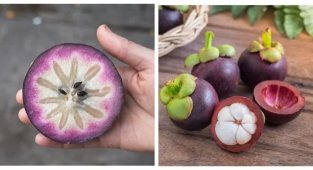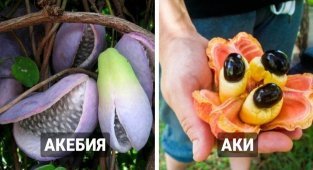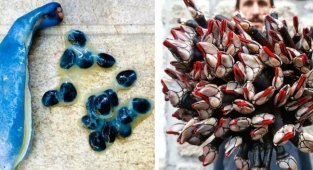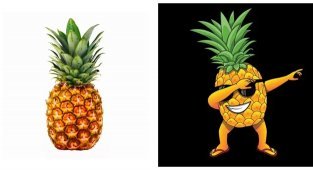Borscht-flavored fruit and 6 more exotic fruits that are not available in other stores (8 photos)
According to rough estimates, there are at least 2,000 types of fruits in the world, and even the biggest lovers of these natural sweets do not know even half of them. 
We want to tell you about 7 types that you can easily try while traveling, but cannot be found on supermarket shelves.
Naranjilla 
This small fruit is native to South America, and there, in Colombia or Brazil, everything is prepared from it: from fruit salads to yogurts and ice cream. Lulo, as it is also called, looks like a yellow hairy orange, but inside it looks more like an unripe green tomato. Naranjilla tastes like a mixture of fruits and berries such as lime, strawberry and pineapple.
Bam-balan 
The taste of this fruit would appeal to all Ukrainians, because it exactly resembles the taste of borscht with sour cream. You can try such a curiosity only on the island of Borneo. There it is very affordable, and many tourists bring bam-balan as gifts. But the stale fruit is not very pleasant to the taste, and in order to fully appreciate its unusual and familiar taste, you need to try the ripe fruit, which local merchants expertly select.
Yangmei 
This exotic fruit claims to be one of the symbols of China, where it is nicknamed the Chinese strawberry or mountain peach, although it has nothing to do with them. The fruit tastes like a mixture of cherries, strawberries and blackberries, but is sweeter and tart. Residents of the Middle Kingdom not only eat yangmei and make a variety of dishes from it, but also use it in medicine as a storehouse of useful vitamins and antioxidants.
Chompu or Malabar plum 
This fruit is native to Malaysia and Eastern India, and later the tree was brought to Sri Lanka and Indochina. Local residents value chompa for its ability to quickly quench thirst, because the pulp of the fruit is very juicy and resembles sweetened water. In general, the consistency of the fruit is more like a loose apple or pear than a plum, and you can eat it without peeling it.
Cupuacu 
The tree with these fruits grows in the Amazon River basin. In appearance, the fruit resembles a large nut the size of a palm, with a very strong rind. But inside there is white juicy pulp, which in taste is associated with a mixture of banana and pear, but smells like chocolate and pineapple. It is interesting that no one picks the fruits from the trees, because only when fully ripe do they immediately fall to the ground. In Brazil, this is the most valuable fruit, because its tree is very capricious to grow, and there are not as many fruits as we would like.
Kuruba 
You can find this fruit in Bolivia, Colombia and Uruguay, and locals call it banana granadilla. The unripe green fruits resemble small zucchini, but when they ripen they turn bright yellow. Inside are juicy, sweet and sour seeds, from which Latin Americans make jam and homemade wine. They also take fresh berries with them on hikes, because they perfectly replace water in hot, humid countries.
Kanistel 
This fruit can be tasted in Mexico, Guatemala, Belize and El Salvador. It grows on an evergreen tree that can reach a height of 8 meters. It is interesting that the canistel can be of completely different shapes: round, oval, heart-shaped, and the color can vary from pale yellow to orange. The pulp of the fruit is mealy and sweetish, but locals eat canistel not only as a dessert or topping for ice cream, but also as a side dish for meat dishes, baking it in the oven like potatoes.




